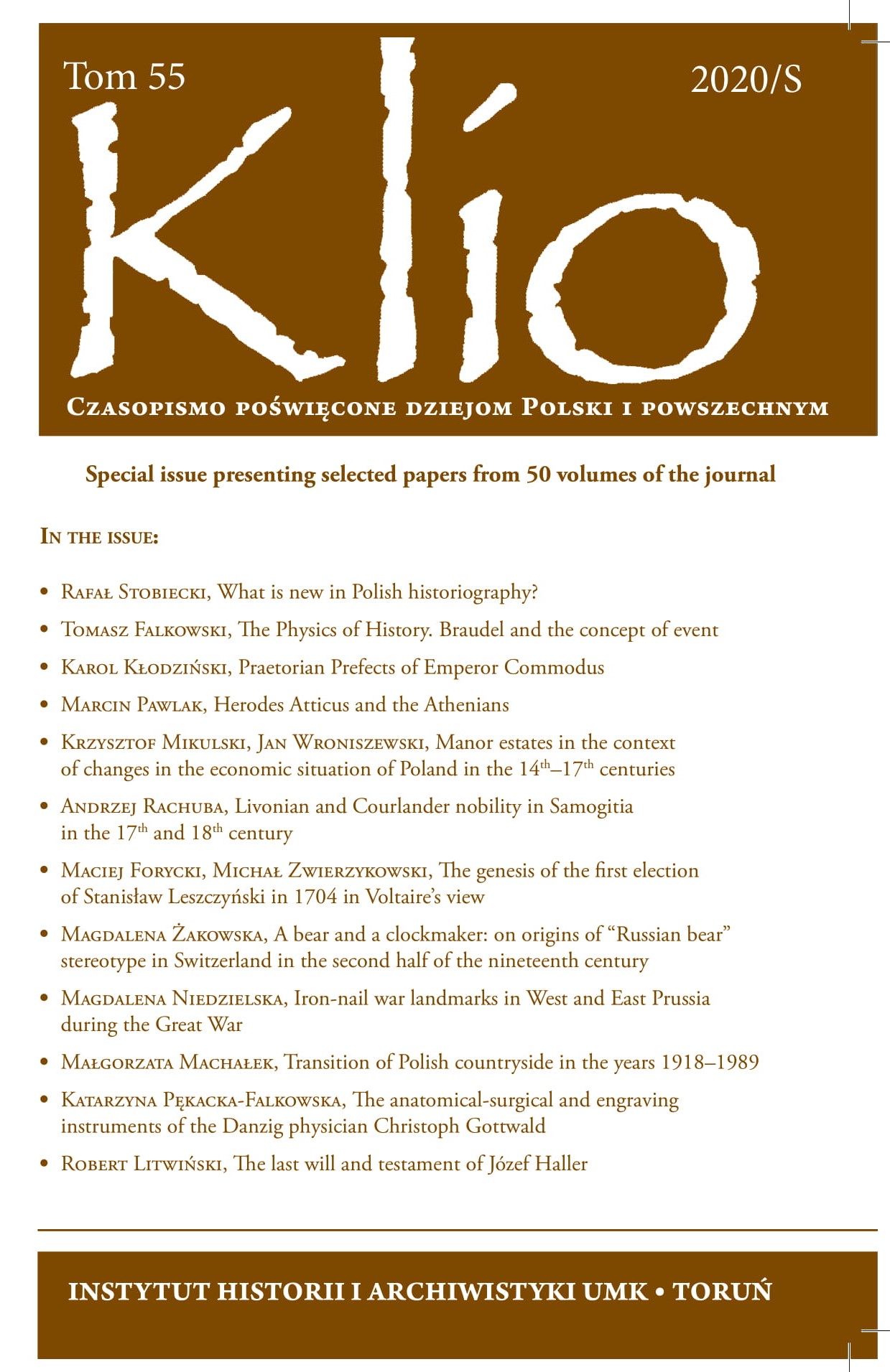The Role of Russian Army Cartographers during the Great Northern War – the Example of the Campaign of Grodno of 1706
The Role of Russian Army Cartographers during the Great Northern War – the Example of the Campaign of Grodno of 1706
Author(s): Karol ŁopateckiSubject(s): History, Military history, Modern Age
Published by: Wydawnictwo Naukowe Uniwersytetu Mikołaja Kopernika
Keywords: military maps; engineers; Grodno; Tykocin; 18th century cartographers; military camps; Joseph-Gaspard Lambert de Guerin; Russian army
Summary/Abstract: This aim of this article is to analyse the role of cartography in operational activities during the Great Northern War. So far, only Swedish materials from that period have been studied, and this work involves two maps made for the needs of the Russian army by Engineer-General Joseph-Gaspar Lambert de Guerin (in Russian: Žozef Gaspar Lamber de Geren. They were produced within the first three months of 1706 for the needs of the so-called Campaign of Grodno. Cartographic materials show that the Russian army comissioned engineers to conduct a preliminary terrain survey at the time. Initially, the officers devised marching routes from Grodno to Tykocin (only one such map has been preserved: Carte d’une partie de la Lithuanie et de la Pologne). At least four such routes were surveyed; three places were also found where the Neman river could be crossed, as well as fords and bridges that allowed the army to cross over the Biebrza river. Then, in the second phase, as the whole army had to flee from Swedish troops, all the routes were combined on one map: Environs de Grodno et Ticochin. This text presents the mistakes made by Lambert when producing this map. Despite its imperfections, the cartographic documentation contributed to the successful escape of the Russian forces from Grodno (22.03/2.04). After reaching Tykocin, Peter I’s troops successfully crossed the Narew river (29.03/9.04) and then went toward Brest Litovsk (4/15.04). The estimated average daily marching speed was 18.9 km, but within the two recorded days, the army managed to walk almost 70 km.
Journal: Klio. Czasopismo poświęcone dziejom Polski i powszechnym
- Issue Year: 57/2021
- Issue No: 1
- Page Range: 57-88
- Page Count: 32
- Language: English

